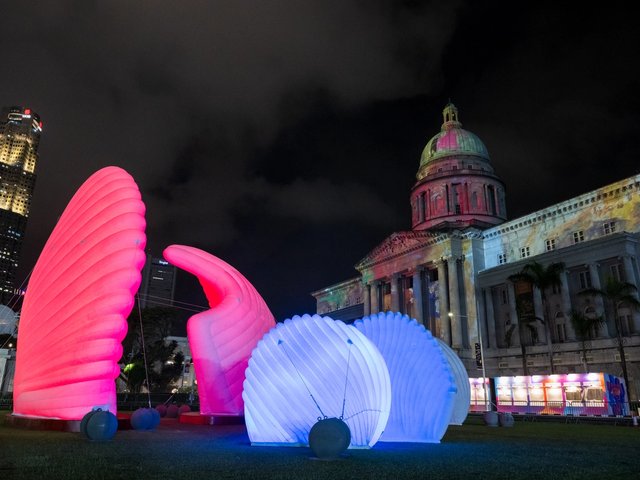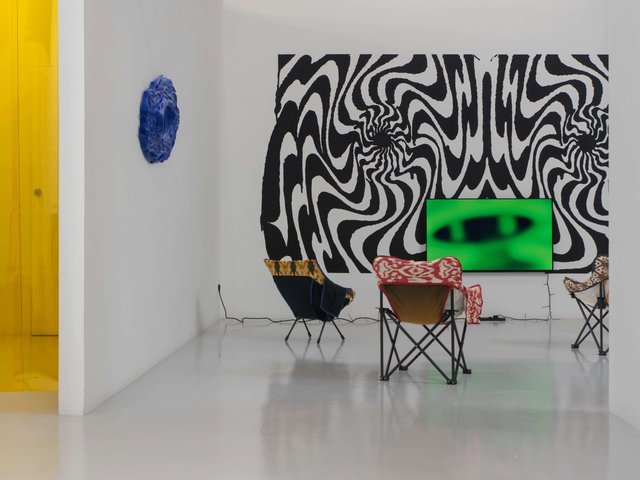Singapore is celebrating its 60th anniversary of independence from British colonial rule on 9 August, a pivotal milestone in its storied modern history, which includes Japanese occupation during the Second World War and a brief merger with neighbouring country Malaysia.
This year’s celebrations, dubbed SG60, include a slew of nation-wide economic incentives, community outreach programmes, as well as an annual parade.
Various cultural institutions across the island are also involved. On 17 July, National Gallery Singapore launched SG60’s signature programme dedicated to Singapore’s art history with Singapore Stories: Pathways and Detours in Art, a long-running exhibition featuring more than 400 works of art and artefacts spanning from the 19th century to the present.
The museum is housed in the former supreme court and city hall buildings with their famed colonial architecture, facing a historic field known as the Padang. Since its inception in 2015, Singapore Stories is the first major rehang of the museum’s key permanent galleries focusing on Singapore's art history.
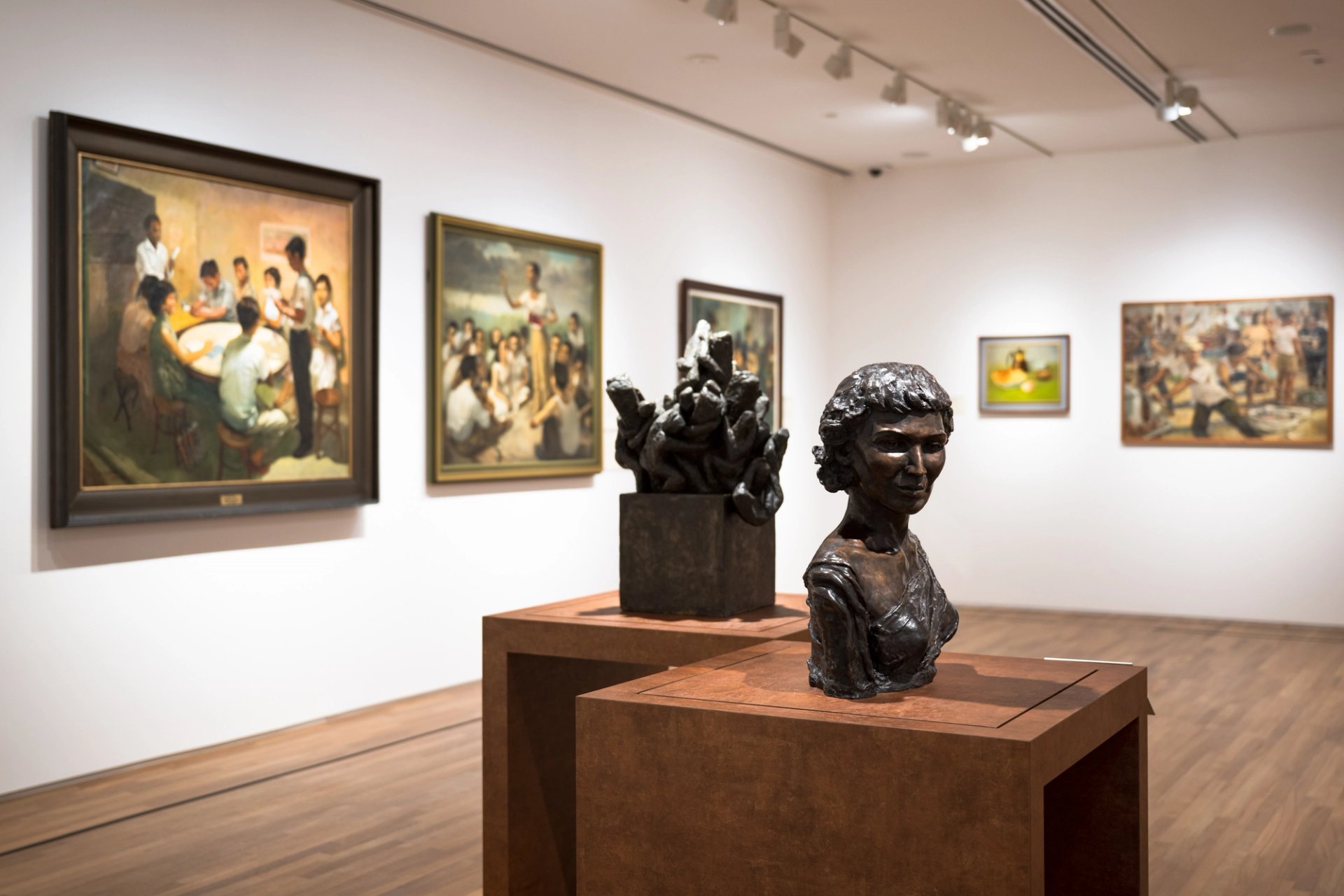
An installation view of Singapore Stories: Pathways and Detours in Art at the National Gallery Singapore Image: courtesy of the National Gallery Singapore
Adele Tan, a senior curator at National Gallery Singapore and the lead curator of Singapore Stories, tells The Art Newspaper, “We reduced the exhibition footprint given over to British colonial imagery related to coastal and topographical surveys”, which was part of the first iteration of the permanent gallery.
She also explains that The Esplanade from Scandal Point (1951) by the writer and artist John Turnbull Thomson, who was also the British government surveyor of the Straits Settlements, was placed as the first work in Singapore Stories to provide a “more complex picture of Singapore and representing the multicultural, convivial, polyglottic space at the Padang/Esplanade that was already there in the 19th century.”
Tan says the curatorial team endeavoured to include “a diversity of voices and practices”, such as lesser-known names and works alongside practices by major artists in Singapore,” in an effort to acknowledge “entrenched historiographic systems of recognition.”
Nonetheless, the Singapore museum veteran Kwok Kian Chow, the founding director of Singapore Art Museum and National Gallery Singapore, from 1993 to 2011, believes there is still a “significant disconnection between mid-20th century anticolonial art and subsequent art trends in Singapore.”
According to Kwok, decoloniality in Singapore art is notably disconnected from Global South art trends that deconstruct colonial history on their own terms. He cites the Indonesian contemporary art collective ruangrupa’s work as artistic directors for Documenta 2022 as an example of decoloniality in art from Southeast Asia. In contrast, “decoloniality in Singapore art emerged mainly as part of a global art discourse trend that is still largely led by the West,” he observes.
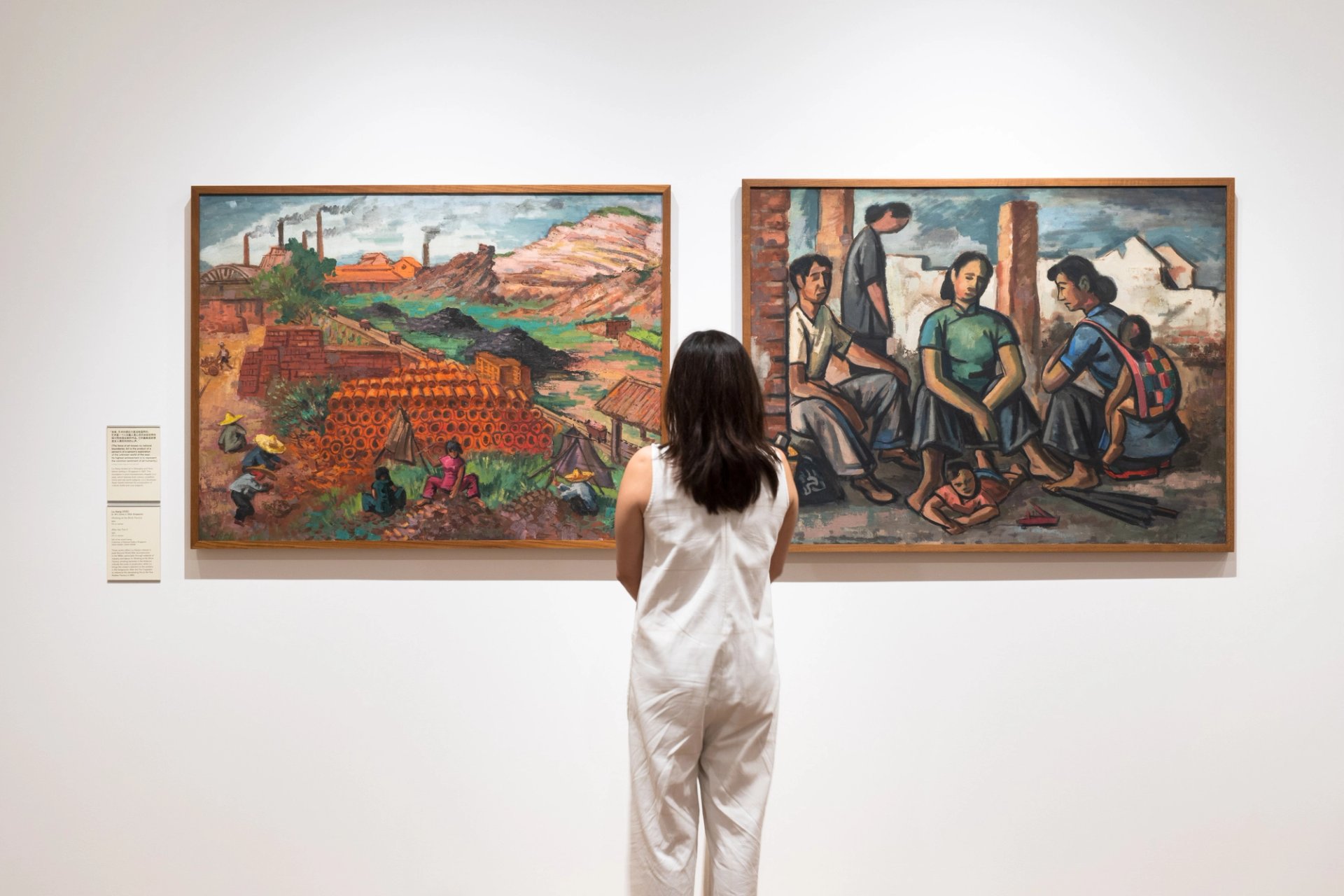
An installation view of Singapore Stories: Pathways and Detours in Art at the National Gallery Singapore Image: courtesy of the National Gallery Singapore
Syed Muhammad Hafiz, a former co-curator of exhibitions at National Gallery Singapore, agrees: “I think this is largely a reflection of the state of our scholarship in Singapore and goes beyond the discipline of art history.”
According to the curator, if Singapore fails to acknowledge that colonialism resulted in more ruptures than continuities in its cultural history, then the country's ideas, movements and events will be derivative from the West. On the other hand, he adds, “if you look deeper and beyond, you will know that the polities in this region previously already had their way of doing things and systems of thinking.”
Running since May, the National Museum of Singapore’s Once Upon a Tide: Singapore’s Journey from Settlement to Global City, invites visitors on a journey through the country’s 700-year history, from a bustling 14th-century port to an advanced economy. Alongside virtual projections, 350 artefacts illustrate how the sea and river shaped Singapore’s evolution through a constant flow of people, goods, and ideas from around the world—long before globalisation.
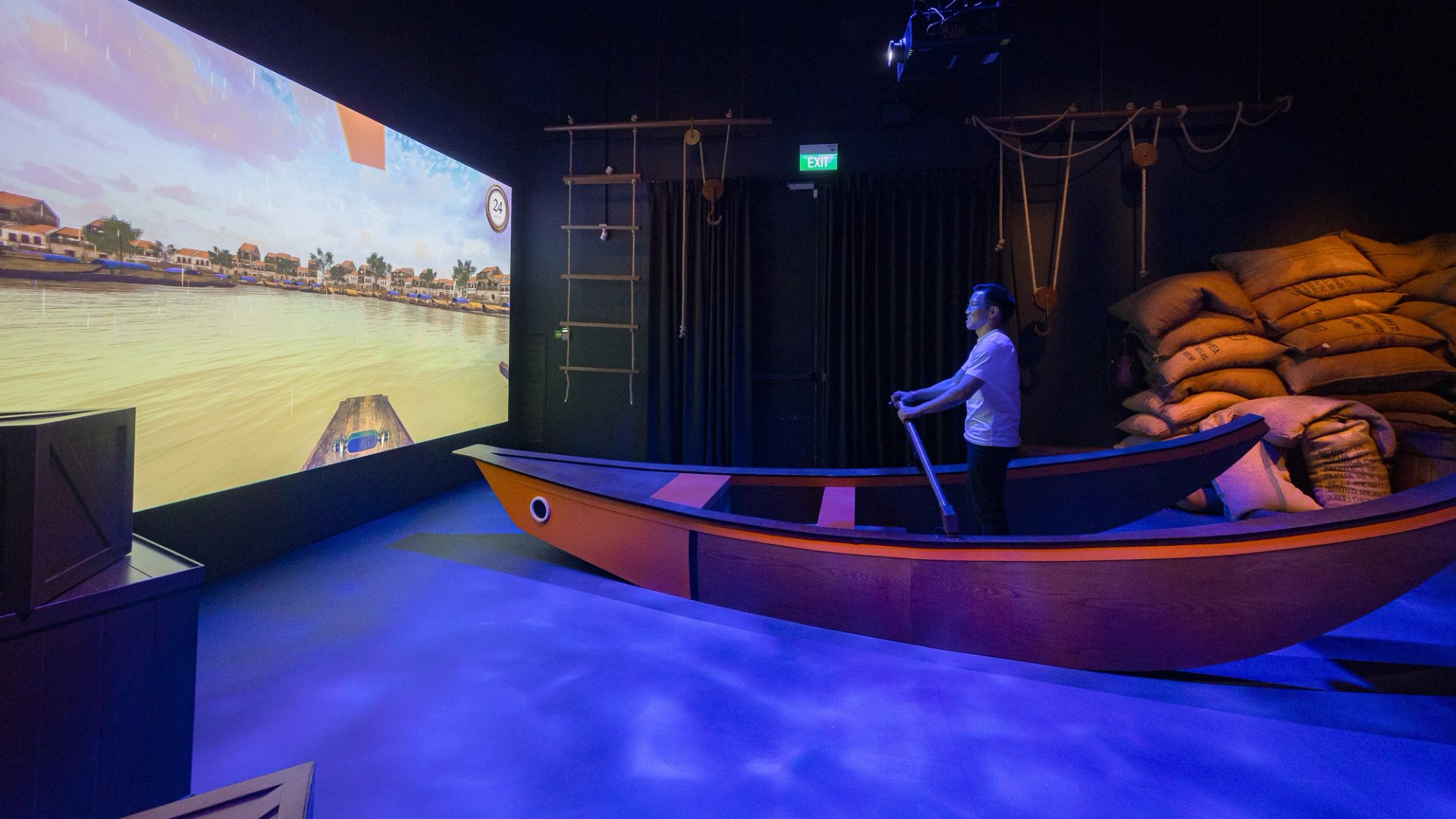
A visitor taking part in the "Sampan Challenge" in the Once Upon a Tide exhibition at the National Museum of Singapore Image: courtesy of the National Museum of Singapore
Meanwhile, the ArtScience Museum, located at the tourist attraction Marina Bay Sands, opened SingaPop! 60 Years of Singapore Pop Culture (until 28 December), curated by the prominent Singapore composer, playwright, and filmmaker Dick Lee.
The exhibition traces the evolution of Singapore’s pop culture from its distinctive Singlish language and hawker food culture to television and music including Lee’s hit song Fried Rice Paradise. The song was originally released in 1974 and formerly banned on national radio for its use of Singlish, cited as improper English at the time. Today, Lee’s SingaPop! exhibition includes a section where visitors can test their Singlish skills.
Lee says, “Singapore's reputation as a dynamic futuristic city has blossomed in recent years, and the island has been included in many a bucket list. However, little is known about our culture and identity, other than the obvious and visible signs of modernity and multiculturalism. My wish is for SingaPop! to address this in a fun, light-hearted way…”
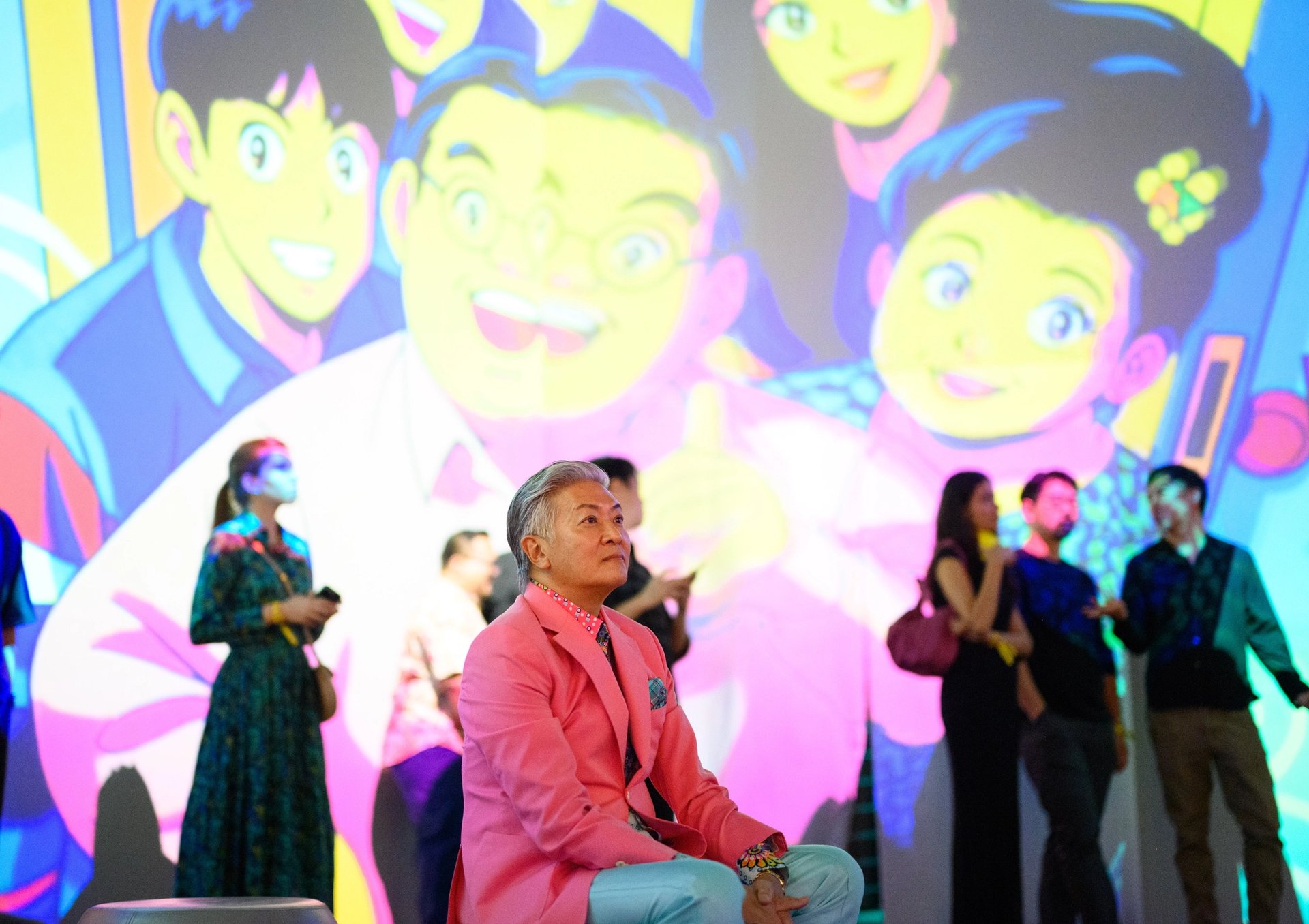
Dick Lee, the curator of SingaPop! 60 Years of Singapore Pop Culture Image: courtesy of the ArtScience Museum, Marina Bay Sands
Since gaining independence from the British in 1965, Singapore’s cultural institutions have been struggling with a paradox: despite a Western caricature of Singapore as an authoritarian state, a notion persistently popular with leading Western democracies flagrantly enacting their own crackdowns, there also exists a wariness in Singapore’s cultural landscape about antagonising gate-keepers in the West.
As long as Singapore's arts scene keeps seeking recognition or acknowledgement from Euro-American institutions, “we are still trapped, whether we realise it or not,” Muhammad Hafiz says.
Gauri Krishnan, who was part of the pioneering curatorial team of Singapore’s Asian Civilisations Museum in 1993, asserts that, “In response to the enduring effect of Western colonial hegemony, I would like to see trends arising from the Global South traveling to the West rather than art trends arising always out of the West being adapted in the Global South.”




